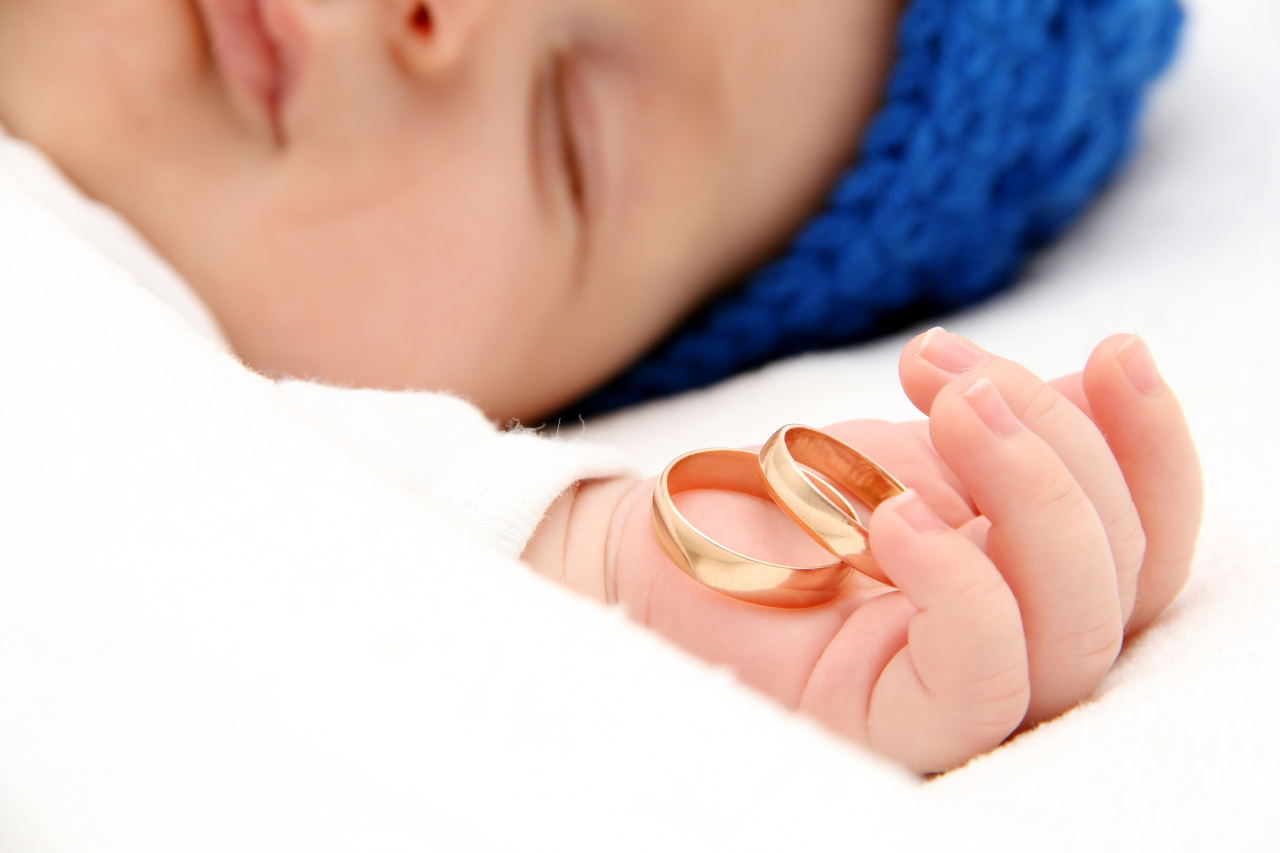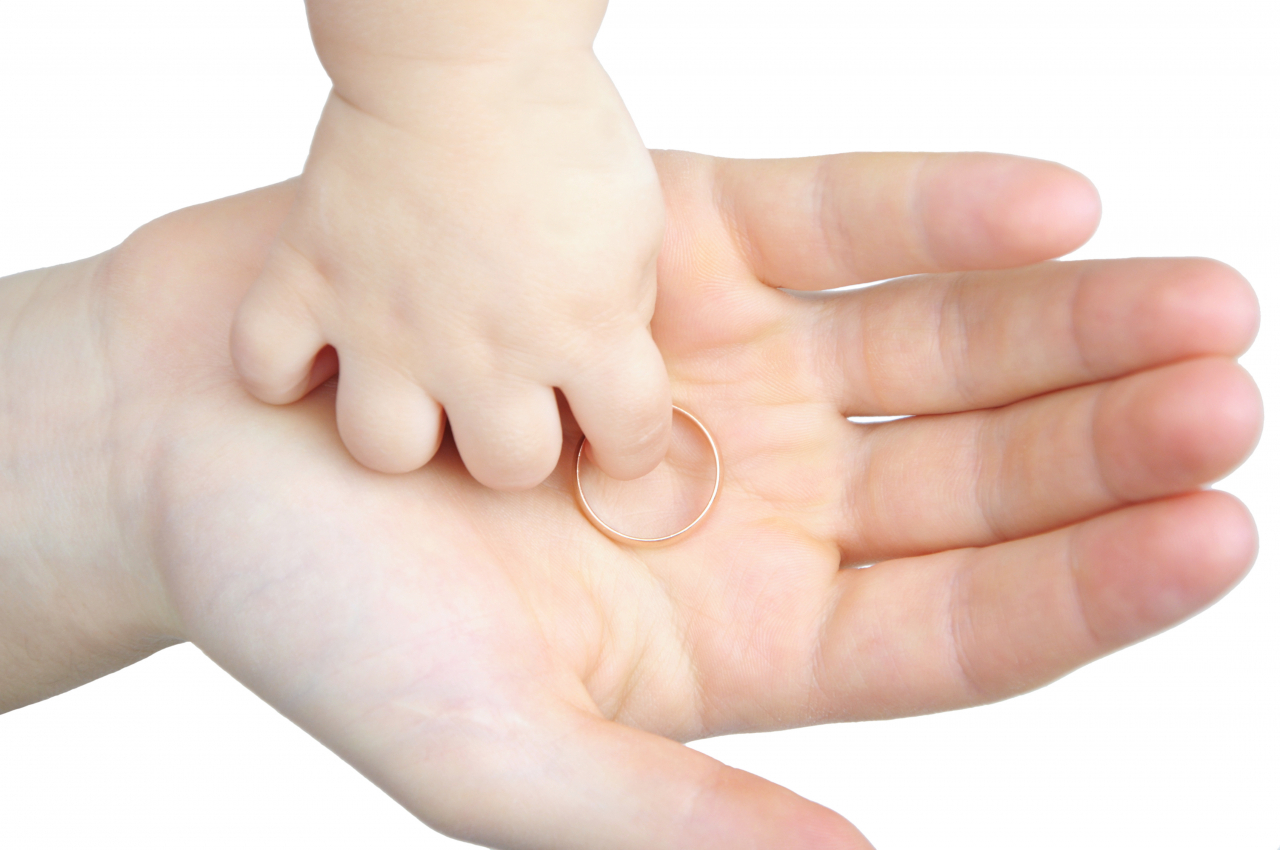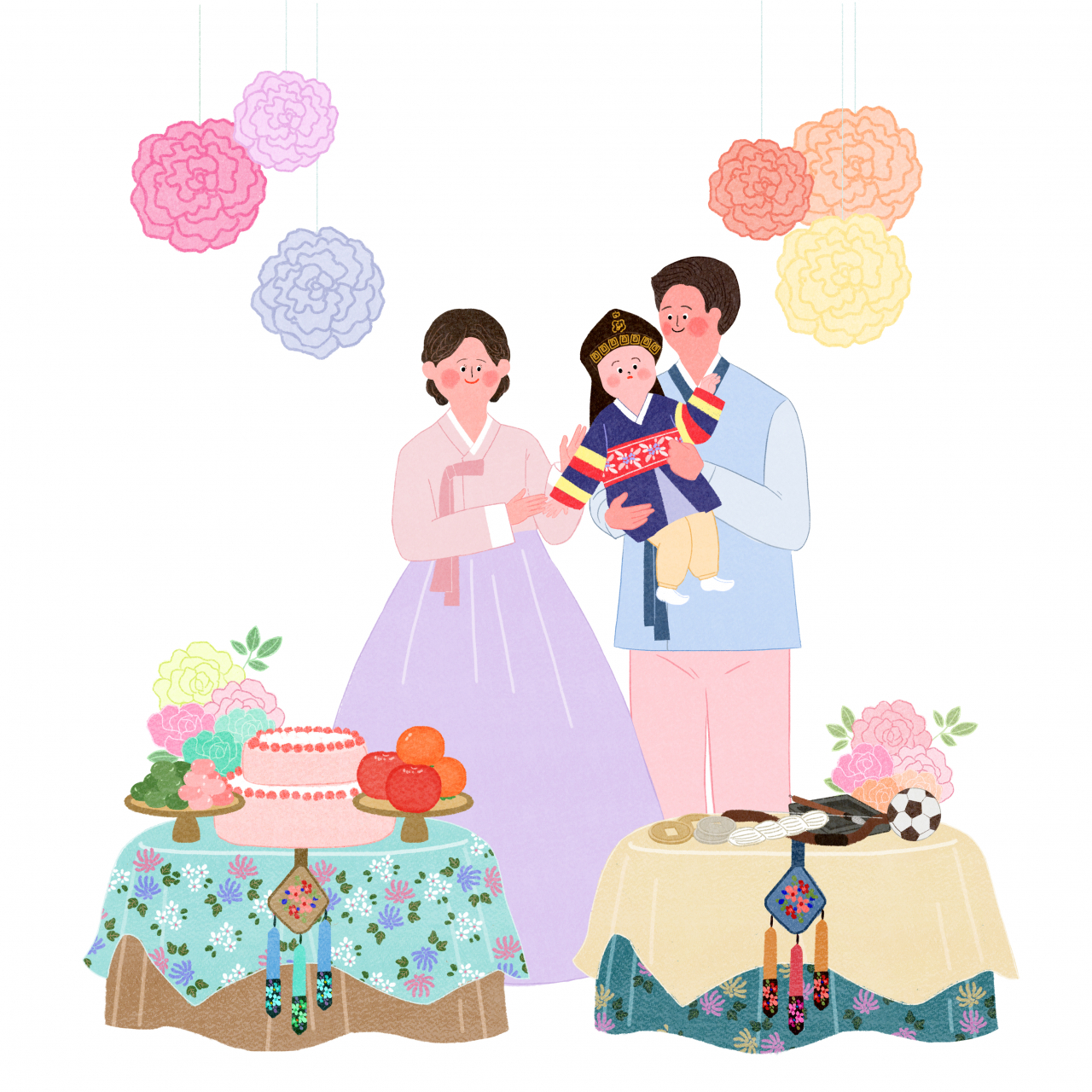 |
(Getty Images) |
A baby’s 1st birthday is celebrated in a significant way in South Korea, with the custom of showering the little one with gold jewelry -- most commonly gold rings.
The tradition began in the early 20th century after Chinese immigrants to Korea gave gold and silver rings or bracelets as gifts.
Each ring typically contains 1 “don” (3.75 grams) of 24-karat gold. Don is the unit used for measuring gold in Korea, originating from Japan.
These gold pieces serve dual purposes, symbolizing prosperity and providing a financial safety net for the baby in case of emergency.
But with today’s high-flying gold prices, the one-don standard has become increasingly burdensome for the giving side, while many parents contemplate the early liquidation of the baby rings they keep at home.
 |
(Getty Images) |
Glittering opportunity
During the monthlong period from April 1 to May 1, gold spot prices ranged between approximately $2,250 and $2,400 per ounce, peaking at an all-time high of above $2,400 on April 12. As of May 1, it was trading at around $2,300 per ounce.
This upward trend in gold prices is driven by mounting concerns over inflation and geopolitical tensions in the Middle East. The risk of recession has prompted investors to seek refuge in safe-haven assets such as gold.
Kim Keon-woo, 32, who hosted a “dol” party for his second daughter in March, was astonished by the remarkable surge in gold prices. “Dol” refers to one's 1st birthday in Korean.
“I've observed a considerable rise in the value of gold rings for my second daughter's dol party compared to two years ago when I received them for my first daughter," he noted.
Indeed, the soaring prices of this non-yielding metal have led many Koreans to contemplate selling their precious “dolbanji,” or gold rings gifted for the 1st birthday, for additional cash flow.
One mom from a Naver cafe for mothers living in Hwaseong, Gyeonggi Province anonymously debated whether now would be a good time to sell gold jewelry gifted by her mother-in-law.
She especially expressed gratitude towards the owner of a local gold shop for advising her not to do so 7 years ago, unless in emergency situations, as the owner believed that gold prices would continue to rise.
The price of 1 don of pure gold, weighing 3.75 grams, stood at 450,000 won ($325) for purchase and 399,000 won for sales, as of April 17, as per the Korea Gold Exchange. This purchase price marks a 25 percent increase compared to last year's price of around 360,000 won.
As numerous households with children would have gold rings, which typically lack aesthetics because they are meant to fit the finger of any chubby baby, there's a brisk trade happening on online secondhand market platforms.
Trading dolbanji directly between individuals can save the 10 percent value-added tax and the 5 percent trading fees tacked on by gold shops or local banks. Plus, buyers can avoid the markup a jeweler adds for goldsmithing.
Online marketplaces like Karrot restrict individual gold transactions exceeding 1 million won. Their reasoning, according to the official website, is that such high-value gold could function similarly to currency.
Yet, transactions involving gold objects valued at less than 1 million won are exempt from any policy violations.
 |
(Getty Images) |
Burdensome gifts
For those on the giving side in this gold gifting custom, invitations to a baby’s first birthday party are increasingly seen as burdensome.
As one alternative, Kim, a father of two, noted the current trend towards gifting slimmer rings of half a don, or even less, particularly when prices get sky-high.
"I've actually received gold ring gifts that were less than one don myself," Kim remarked. "But with gold prices going ballistic these days, it's understandable that people might want to downsize a bit.”
Lee Yoon-seon, 55, who threw dol parties for her two sons in the 1990s, recalls receiving numerous gold ring gifts from family members like her sisters and parents.
"Back then," she reminisced, "a 1-don gold ring wasn't such a financial pressure. I remember their cost was around 50,000 won, a significant sum but manageable for most families."
However, she further stated that this once essential custom has lost its shine for her.
“At my cousin's dol party last year, I opted for the practicality of cash gifts over gold rings. The high price of gold, coupled with the hassle of visiting a gold store to buy it, convinced me to ditch the long-standing tradition,” she elaborated.
With analysts predicting bullish forecasts of gold prices, the financial strain on dol party attendees’ wallets seems destined to persist.
In a recent April interview with Yahoo Finance, commodities strategist Aakash Doshi of Citi Research predicted potential gold prices could climb upwards of $3,000 per ounce within the next year.
He pointed to the consistent gold purchases by central banks as a significant driving factor, as their acquisition of "record amounts of gold" over the past few years has raised "the gold price floor" and mitigated “downside price volatility.”
Bloomberg Intelligence Strategist Mike McGlone projects a far bolder scenario, with gold prices potentially exceeding $7,000 per ounce by 2025, resulting from macroeconomic factors such as the stunted growth of stock markets.
Yet, regardless of gold prices, Kim expressed a willingness to uphold the tradition for future dol parties.
“If this gold bull market keeps charging ahead, I will probably have to shell out more for my sister's baby's gold rings,” he said. “But this is just an economic reality that goes beyond my control.”
 |
(Getty Images) |




![[Herald Interview] How Gopizza got big in India](http://res.heraldm.com/phpwas/restmb_idxmake.php?idx=644&simg=/content/image/2024/11/20/20241120050057_0.jpg)


![[KH Explains] Dissecting Hyundai Motor's lobbying in US](http://res.heraldm.com/phpwas/restmb_idxmake.php?idx=644&simg=/content/image/2024/11/20/20241120050034_0.jpg)